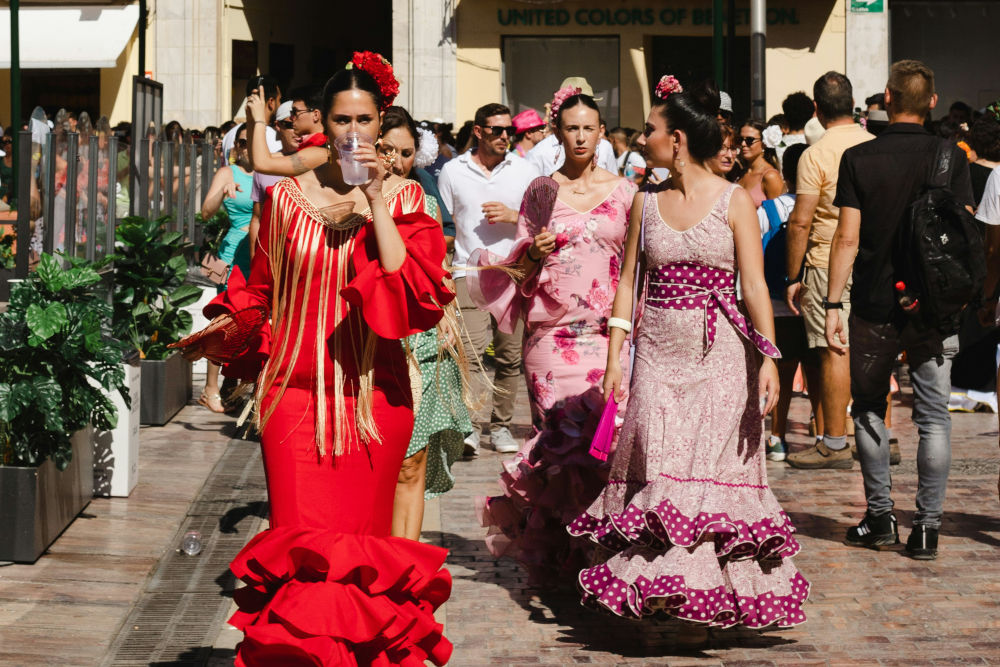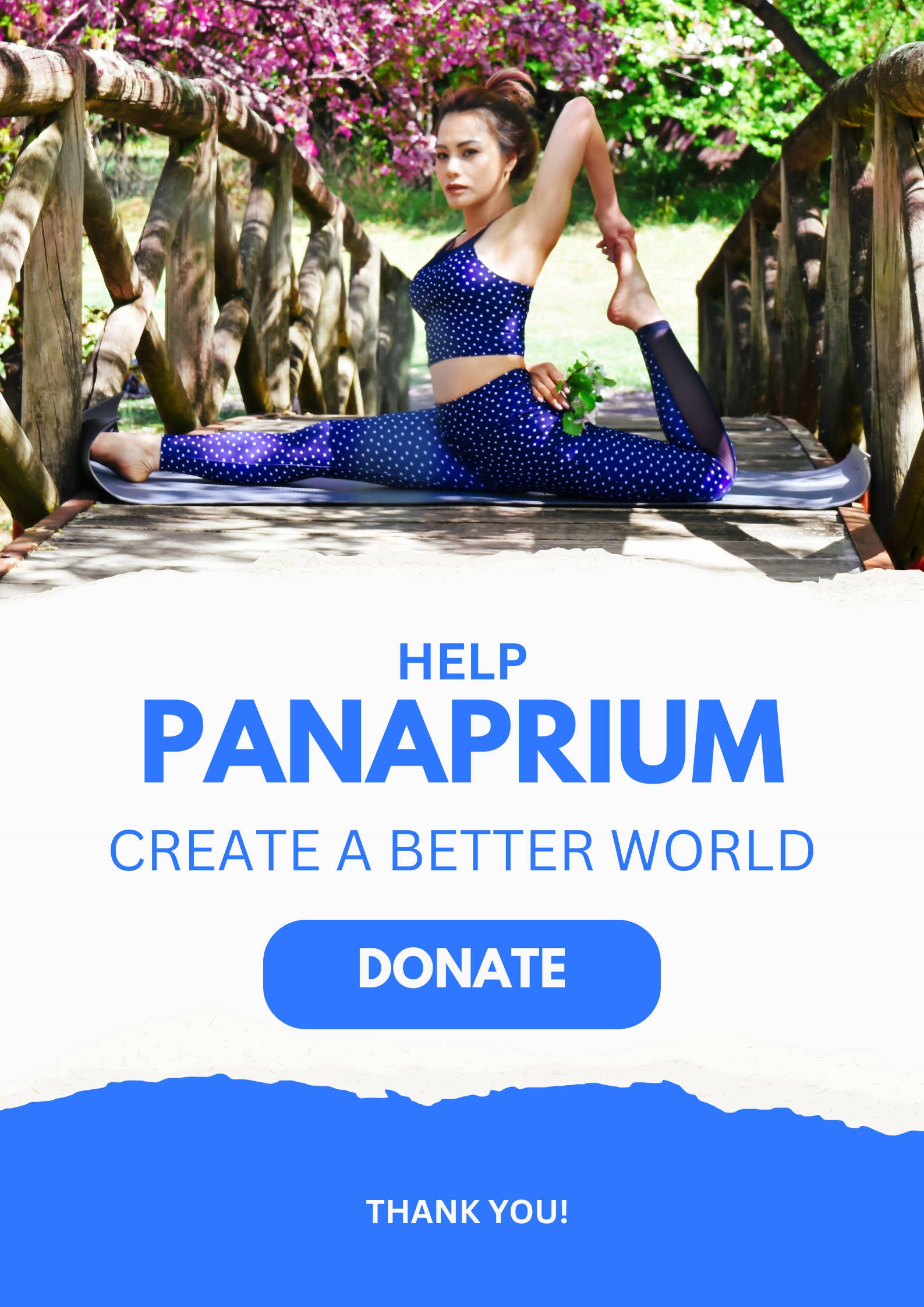
Traditional Spanish clothes preserve the pride and history of a country with a mosaic of distinct regional identities, languages, and traditions, making it one of the most culturally diverse countries in Europe.
Spain has 17 autonomous communities and two autonomous cities (Ceuta and Melilla). Traditional Spanish garb is highly influenced by the various identities, histories, and cultures of its autonomous communities. Each region has a unique attire, reflecting its climate, geography, historical influences, and cultural traditions.
Stay with us and discover how the unique history of Spain, its varied cultural tapestry, and the identity of each autonomous region shaped the beauty of Spanish traditional dress.
Panaprium is independent and reader supported. If you buy something through our link, we may earn a commission. If you can, please support us on a monthly basis. It takes less than a minute to set up, and you will be making a big impact every single month. Thank you!
The Well-known Flamenco Dress

The Flamenco dress originates from Andalusia in southern Spain and ties to the region’s rich flamenco culture and festivals like the Feria de Abril in Seville. The dress has a fitted silhouette that flares into multiple ruffles at the bottom and sleeves.
Traditionally, it is adorned with polka dots (lunares) and features vibrant colors like red, black, white, and bright floral patterns.
Women usually style the dress with large earrings, flowers in the hair, and a fringed shawl (mantón).
Find cute and cheap summer dresses with polka dots or flares here.
The Traditional Dress of Galicia

The rural background of the region has impacted various distinguishing components of the traditional Galician attire. The outfit typically includes a long skirt (saia), often made of wool and richly decorated, along with an apron (mandil) and a shawl (mantón). The blouse is paired with an embroidered vest and has puffed sleeves.
Women typically covered their heads with colorful kerchiefs.
The colors of the garb range from vibrant reds and blues to more muted earth tones depending on the occasion and locality.
Find puffed-sleeved or embroidered blouses and unique styles made under the highest social and environmental standards here.
The Typical Costume Of Mallorca

The traditional Mallorcan costume, vestit de pagès, reflects the rural heritage of the island. Ladies dress in a doublet, petticoats, bodices, crinolines, short or long stockings, and thick or thin skirts for the winter and summer.
The clothing is made from sturdy fabrics like linen and decorated with lace or floral patterns.
Women used caps of fine fabric that sometimes covered the neckline to hold up their hair. The rebosillo - a bell-shaped handkerchief that covered the head and nearly reached the waist, was a very preferred item. The typical footwear was flat and made of raw leather.
Catalan Peasant Costume

The Catalan peasant costume reflects the rural traditions of Catalonia. It typically includes a white shirt, a wide red sash, and dark-colored pants for men, often paired with a barretina - a traditional red or purple woolen hat.
Women wear long skirts, embroidered aprons, and shawls. The clothing emphasizes the ease and pragmatism of country living.
The Pubilla of Catalonia

We remain on Catalan soil to present another typical costume of the pubilla. The pubilla was the eldest daughter destined to receive an inheritance in the absence of a male child.
It arose in the Middle Ages due to the need to avoid the division of family assets and to maintain the family economy, which was then based on agriculture.
The pubilla dress was part of the high society. The garment bore similarities to the Catalan attire but had reacher textiles. Women accessorized it with jewelry and wore it with high heels on special occasions.
Buy jewelry from these sustainable brands, knowing they make beautiful, stylish, and colorful pieces under the highest social and environmental standards.
Las Falleras of Valencia

The traditional Valencian falleras garb is an elaborate and elegant attire worn during the famous Las Fallas festival. The outfit is inspired by 18th-century Valencian women’s clothing, featuring a richly embroidered silk dress with a full skirt and fitted bodice. The dress is complemented by a lace mantilla (veil) and a decorative apron.
The elaborate hairdo, known as peinetas, is a defining characteristic. It consists of braided buns fastened with elaborate combs and hairpins. The costume is completed with jewelry like chokers, earrings, and brooches, reflecting the region’s craftsmanship and tradition.
Worn by working-class Valencian women, particularly those involved in agricultural work, these dresses were practical but still elegant, reflecting the dignity of everyday life in the region.
Over time, the attire evolved into more elaborate garments, adorned with rich fabrics and intricate embroidery, as they became central to the Las Fallas festival.
Madrid Chula

Tomada por w:es:Usuario:Barcex, CC BY-SA 3.0
The chulapa (Madrid chula) costume is typical of the late 19th century in Madrid. The ensemble includes a long skirt that fits snugly around the hips and flares out wide at the bottom and a bodice or blouse with puff sleeves.
One essential piece of chulapa clothing is the handkerchief. It is adorned with red and white carnations and folded into a peak on the head. Carnations are highly customary flowers that lend elegance and color to apparel in Madrid.
A silk shawl with long fringes and floral embroidery completes the look.
Traditional Asturian Clothing

De Joaquín Sorolla - The Athenaeum
Traditional Asturian clothing dates back to the 18th and 19th centuries. It is vibrant and layered, reflecting the region's rural heritage.
Women dress in a white shirt and dengue - a type of pearl-decorated cloak wrapped over the chest and worn over the shoulders. Although the skirt is available in various colors, red and green are the most popular. Lastly, a black apron over the skirt completes the set.
The origins of Asturian traditional clothing are rooted in the rural lifestyle of the region and date back to the 18th and 19th centuries. These garments were influenced by the practical needs of farming communities, incorporating durable, locally produced materials like wool and linen.
Over time, fashion elements from other European regions and social classes blended in, enriching the designs. The intricate embroidery, vibrant colors, and symbolic accessories reflect a mix of local traditions, religious influences, and social status within the Asturian community.
Traditional Clothing of Malaga

The regional clothing of Malaga has a rich selection of costumes made up of three different categories of models: the Malaga costume, the Verdiales costume, and the Marenga costume.
The Marenga female costume consists of white petticoats adorned with red ribbons. The skirt is black, flared, and hits mid-calf.
The Verdiales garb is a blouse with puff sleeves and a skirt with vertical stripes. The skirt is mid-calf, flared, and has ruffles at the bottom. A white scarf draped over the shoulders and a black apron complete the ensemble.

The luxurious Malagueña costume has a tight-fitting black velvet long-sleeved bodice embroidered and decorated with red and yellow fruits. Monocolored skirt with three flounces, white embroidered stockings, and black high-heeled shoes tied with ribbons at the calf complete the look.
The Verdiales Hat

The Verdiales hat is a distinctive part of the traditional attire worn during Verdiales festivities in Malaga. It is heavily decorated with numerous colorful flowers, ribbons, mirrors, and beads, symbolizing joy and celebration. The ornate design varies, reflecting the specific style of the Verdiales dance, which has three categories: Montes, Almogía, and Comares.
The vivid decorations have a deeper meaning than mere aesthetics; they are a reflection of the folklore and rural legacy of the area.
Traditional Clothing From Badajoz

The traditional attire in Extremadura is influenced by its neighboring areas, customs, social classes, lives, and habits of those who wear it.
The popular clothing of the province of Badajoz is significantly different from that of the province of Cáceres. The clothing of Badajoz is influenced by the peoples of Castilla-La Mancha and Andalusia.
The woman of Badajoz is represented with a skirt striped with horizontal black and white stripes. In addition, she has a long-sleeved shirt with a rounded collar and a black velvet doublet with white bobbin lace on the cuffs and forearms. A black embroidered satin apron with a rounded shape and black lace completes the look.
Regarding the hairstyle, it is worth highlighting the braids rolled on each side of the head with the parting in the middle and at the back an 8-strand braid, where a red flower is placed.
Mantilla

The mantilla is a popular female garment in Spain. It originated from the traditional mantle, which women used to cover themselves, and developed into a sophisticated headpiece composed of tulle, chantilly, or lace.
It is common in Holy Week processions, bullfights, and other traditional events, as well as being a ceremonial garment for "godmothers" at baptisms and weddings.
Peineta

By Tamorlan - Own work, CC BY-SA 3.0
A Peineta, similar in appearance to a large comb, is used to hold up a mantilla. This ornamental comb, usually in tortoiseshell color, originated in the 19th century. It is frequently used in combination with the mantilla and has a convex body with a series of prongs. It not only makes the women look taller, but it also holds hair in place during dances, processions, and weddings.
The Peineta is a fundamental element of the Valencian and Andalusian regional costumes.
Here is our selection of the best affordable and sustainable hair accessories made from organic or recycled materials under high social and environmental standards.
Capirote Hat

The Capirote is the headdress of the Spanish brotherhoods Nazarenes and Penitents, worn during the Holy Week - the week of the Passion of Christ. It may be flaccid or armed. The Nazarenes often use the armed one, which is cone-shaped and has cardboard armor inside, whereas the Penitents typically use the flaccid one, which rests on the nape of the neck and shoulders.
During the Spanish Inquisition, sinners had to wear such pointed hats that visibly stigmatized them. Subsequently, the Spanish fraternities began donning them, but they intended to focus attention on God rather than on themselves. This practice helped them remain humble during the processions and prayers.
Shawl

The shawl, or mantón, is an essential accessory in traditional Spanish clothing, especially in regions like Andalusia. It is typically a large, square fabric made of silk or other fine materials, often richly embroidered with floral patterns. The mantón is worn draped over the shoulders, adding elegance and warmth.
It is usually fringed and features vibrant colors, complementing dresses like the flamenco attire. Women wear shawls during festivals and important celebrations to represent Spanish femininity and cultural heritage.
Traditional Footwear

Espardeñas, today known as espadrilles, are woven shoes made from esparto grass or jute, commonly worn in Catalonia and Valencia.
Check out our selection of the 10 Best Affordable, Vegan, and Sustainable Espadrilles.

Was this article helpful to you? Please tell us what you liked or didn't like in the comments below.
About the Author: Iana Jekova
What We're Up Against
Multinational corporations overproducing cheap products in the poorest countries.
Huge factories with sweatshop-like conditions underpaying workers.
Media conglomerates promoting unethical, unsustainable products.
Bad actors encouraging overconsumption through oblivious behavior.
- - - -
Thankfully, we've got our supporters, including you.
Panaprium is funded by readers like you who want to join us in our mission to make the world entirely sustainable.
If you can, please support us on a monthly basis. It takes less than a minute to set up, and you will be making a big impact every single month. Thank you.































0 comments